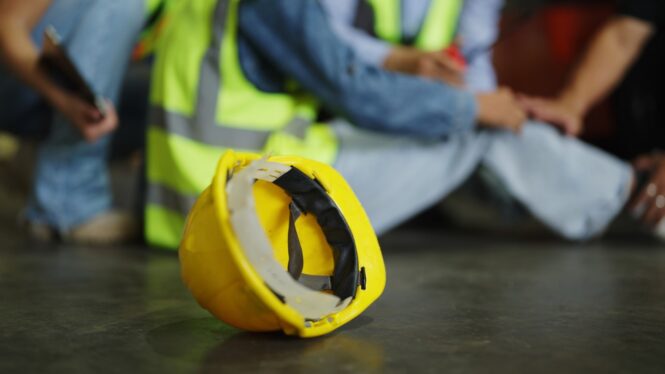Spinal cord injuries (SCIs) are among the most severe injuries that can happen in the workplace. The impact of such an injury is profound, affecting every aspect of a person’s life.
The Immediate Impact
When a spinal cord injury occurs, the immediate impact is often shock and confusion. The spinal cord, a crucial part of the central nervous system, carries signals between the brain and the rest of the body. Damage to this vital conduit can result in partial or complete loss of motor control and sensation below the site of the injury. Depending on the severity and location, an individual may experience anything from minor impairment to complete paralysis.
In the moments following the injury, the body may exhibit a range of responses. There could be intense pain, a feeling of numbness, or an inability to move certain parts of the body. Emergency medical intervention is crucial during this time. Stabilizing the spine and preventing further injury are the primary goals for first responders and medical personnel.
Understanding the implications of a spinal cord injury can help workers, employers, and healthcare providers better navigate the challenges that arise in the aftermath of such a traumatic event. For more information find here.
Hospitalization and Initial Treatment

Once the injured worker is transported to the hospital, a series of diagnostic tests will be conducted to assess the extent of the damage. These tests often include X-rays, MRIs, and CT scans. The results will determine the course of treatment, which may include surgery to remove bone fragments, stabilize the spine, or decompress the spinal cord.
During the initial treatment phase, the primary objective is to minimize any further damage and reduce inflammation. Medications such as corticosteroids may be administered to decrease swelling around the spinal cord. The patient will likely spend time in an intensive care unit where they can be closely monitored.
Rehabilitation and Long-Term Care
Rehabilitation begins as soon as the patient is stable. This phase is crucial for recovery and involves a multidisciplinary approach, including physical therapists, occupational therapists, and rehabilitation doctors. The goal of rehabilitation is to help the patient regain as much function and independence as possible.
Physical therapy focuses on strengthening the muscles that are still functional and improving mobility. Occupational therapy helps patients relearn daily activities, such as dressing, eating, and bathing, using adaptive techniques and equipment. Psychological support is also essential, as the emotional and mental toll of a spinal cord injury can be significant.
Long-term care needs vary greatly depending on the severity of the injury. Some individuals may require full-time care, while others might only need periodic assistance. The home environment may need to be adapted to accommodate mobility devices like wheelchairs, and ongoing medical care will likely be necessary to manage complications and maintain health.
The Emotional and Psychological Impact
The emotional and psychological impact of a spinal cord injury can be as challenging as the physical aspects. Adjusting to a new reality that may include limited mobility and dependence on others is a significant hurdle. Feelings of anger, frustration, depression, and anxiety are common.
Support from mental health professionals can be invaluable during this time. Counseling, support groups, and therapy can provide a safe space for individuals to express their emotions and develop coping strategies. Family and friends also play a critical role in providing emotional support and encouragement.
Financial and Legal Considerations

The financial impact of a spinal cord injury can be overwhelming. Medical bills, rehabilitation costs, and the need for long-term care can add up quickly. Additionally, the injured worker may face lost wages and diminished earning capacity.
Navigating the financial and legal aspects requires careful planning and often professional assistance. Workers’ compensation may cover some expenses, but it may not be sufficient to meet all needs. In such cases, seeking the advice of a specialized attorney can be beneficial. For instance, a Hamilton spinal cord injury lawyer can provide guidance on potential compensation and legal avenues to explore.
Returning to Work
Returning to work after a spinal cord injury is a complex process that depends on the severity of the injury and the nature of the job. Some individuals may be able to return to their previous position with accommodations, while others may need to explore new career paths.
Employers play a crucial role in facilitating this transition. Workplace accommodations might include modifying workstations, providing assistive technology, and allowing flexible work schedules. Vocational rehabilitation services can help individuals assess their skills and find suitable employment opportunities.
For many, returning to work is not just about financial stability but also about regaining a sense of purpose and normalcy. The process can be gradual and requires patience from both the employer and the employee.
Preventing Spinal Cord Injuries at Work

Prevention is the best strategy when it comes to spinal cord injuries in the workplace. Employers should prioritize creating a safe work environment through regular training, proper equipment maintenance, and adherence to safety protocols. Workers should be encouraged to follow safety guidelines and report potential hazards.
Investing in ergonomic equipment, conducting regular safety drills, and fostering a culture of safety can significantly reduce the risk of accidents that lead to spinal cord injuries. Additionally, employers should have clear protocols in place for responding to injuries when they do occur, ensuring that affected individuals receive immediate and appropriate care.
Conclusion
Spinal cord injuries at work are life-altering events with far-reaching consequences. From the immediate medical response to long-term rehabilitation and emotional support, the journey is challenging and complex. Understanding what really happens when such an injury occurs can help in better preparing, responding, and supporting those affected.
 Imagup General Magazine 2024
Imagup General Magazine 2024



